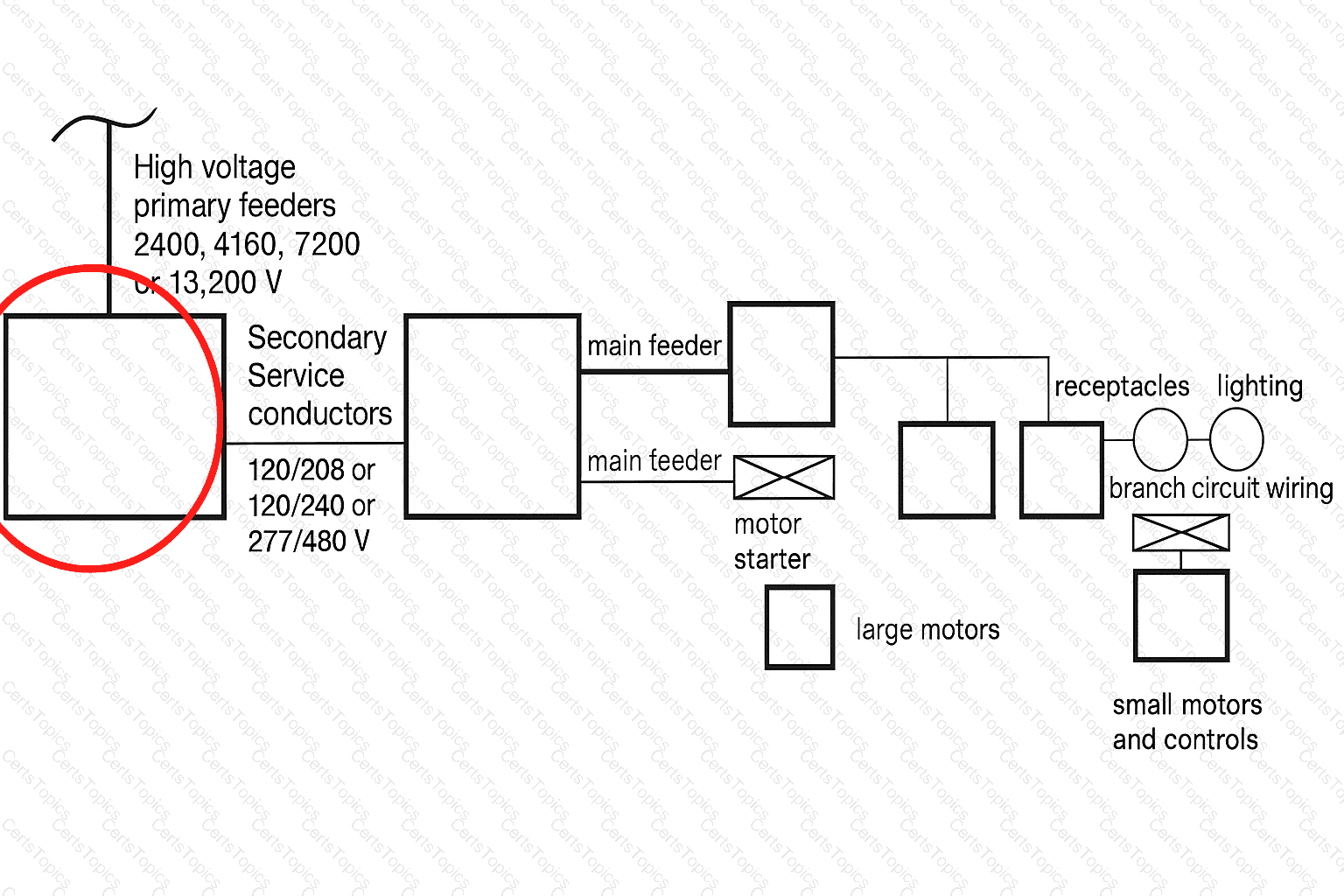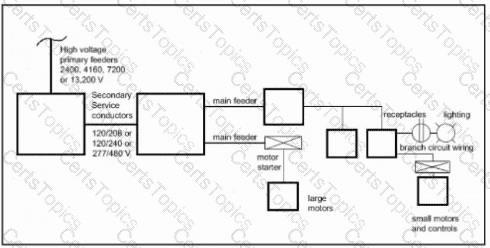
The transformer is located in the first large box after the high-voltage primary feeders and before the secondary service conductors on the left side of the diagram.
Step-by-Step Reasoning
1. Understanding the diagram flow:
The leftmost symbol represents high-voltage primary feeders from the utility (2,400V, 4,160V, 7,200V, or 13,200V).
Immediately after that, there is a large box labeled "Secondary Service conductors" with standard building service voltages (120/208, 120/240, 277/480 V).
To get from primary (medium/high) voltage to these usable secondary voltages, you must step down the voltage — and that is done by a transformer.
2. Transformer location in electrical distribution:
Transformers are always placed between the incoming primary service and the secondary distribution system in building diagrams.
In this drawing, the transformer is symbolized by the first large square/rectangular box after the high-voltage primary feeders.
3. Why not any other box?
The following boxes and lines after this first step are feeders, panels, and motor starters — they operate at secondary voltage.
Only the transformer connects the utility high-voltage system to the building's lower-voltage system.
NCARB ARE 5.0 PDD References:
Content Area: Electrical Systems — Service Entrance and Distribution
Source References:
MEEB (Mechanical and Electrical Equipment for Buildings) — Chapter on Transformers & Electrical Service
NEC (National Electrical Code) Article 450 — Transformer Installation and Use
Architectural Graphic Standards — Single-Line Diagrams for Electrical Distribution
Key Point:
In building electrical distribution, the transformer is always between the high-voltage primary service and the secondary service conductors to step down voltage to a usable level for building loads.
